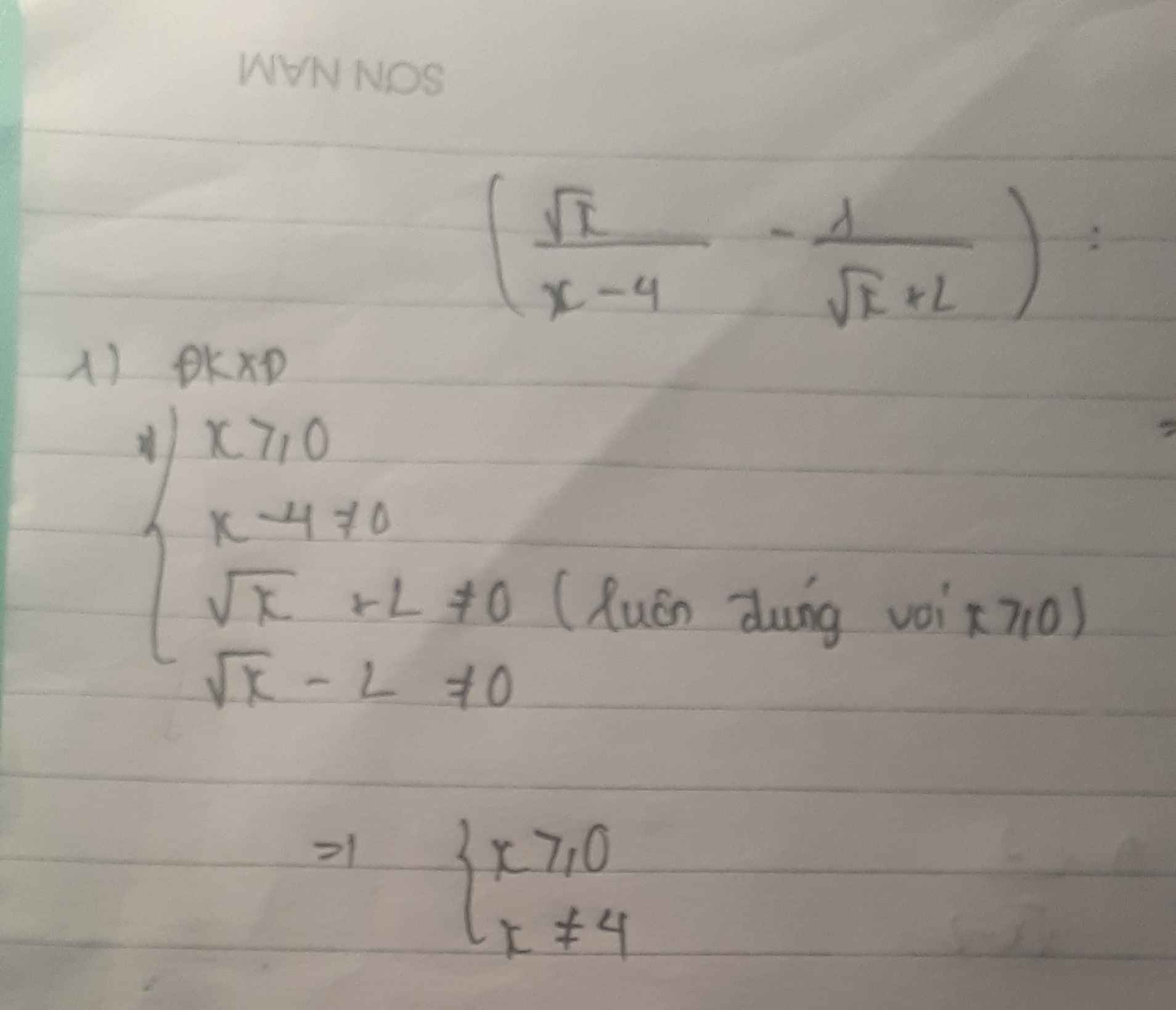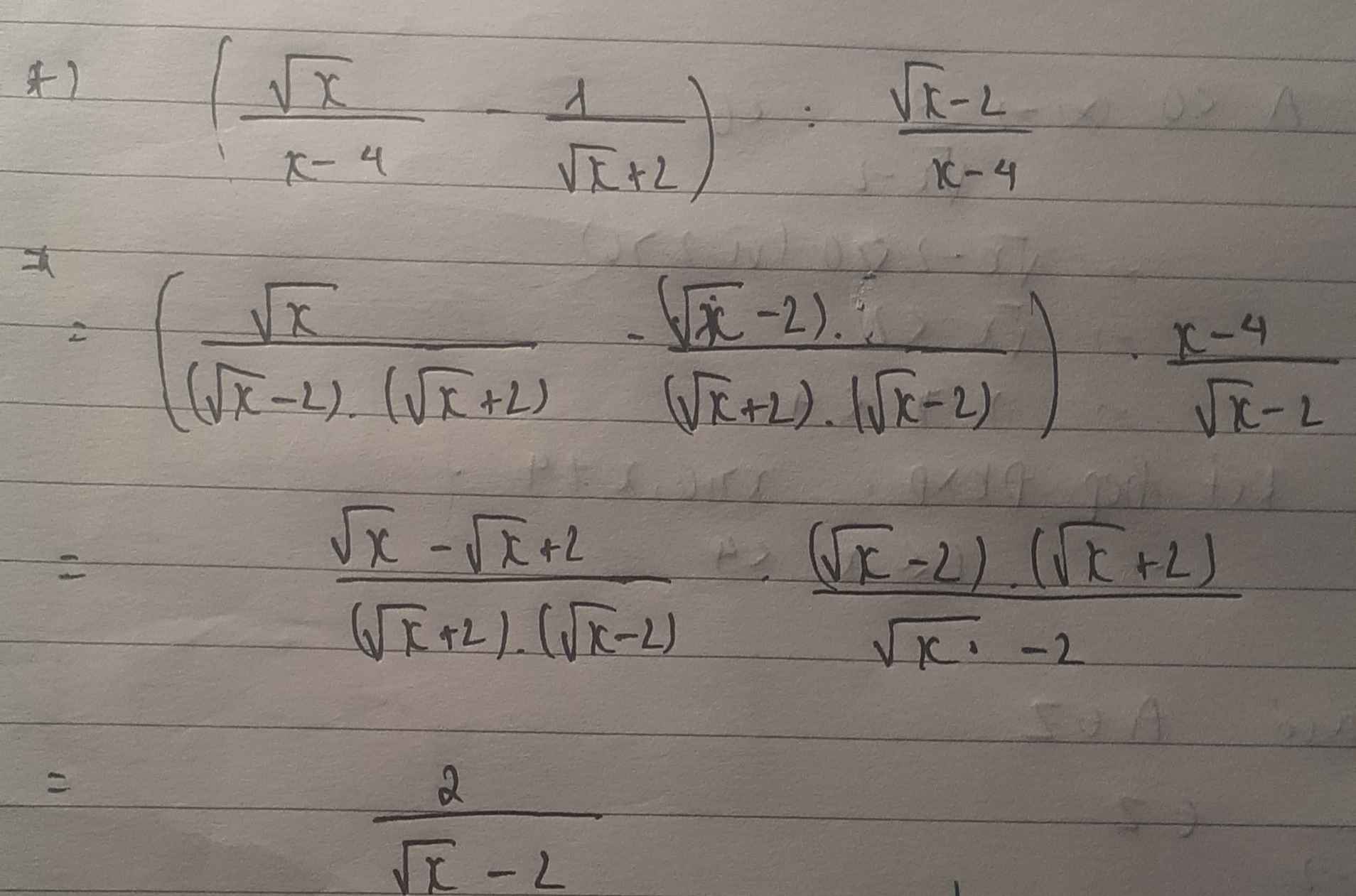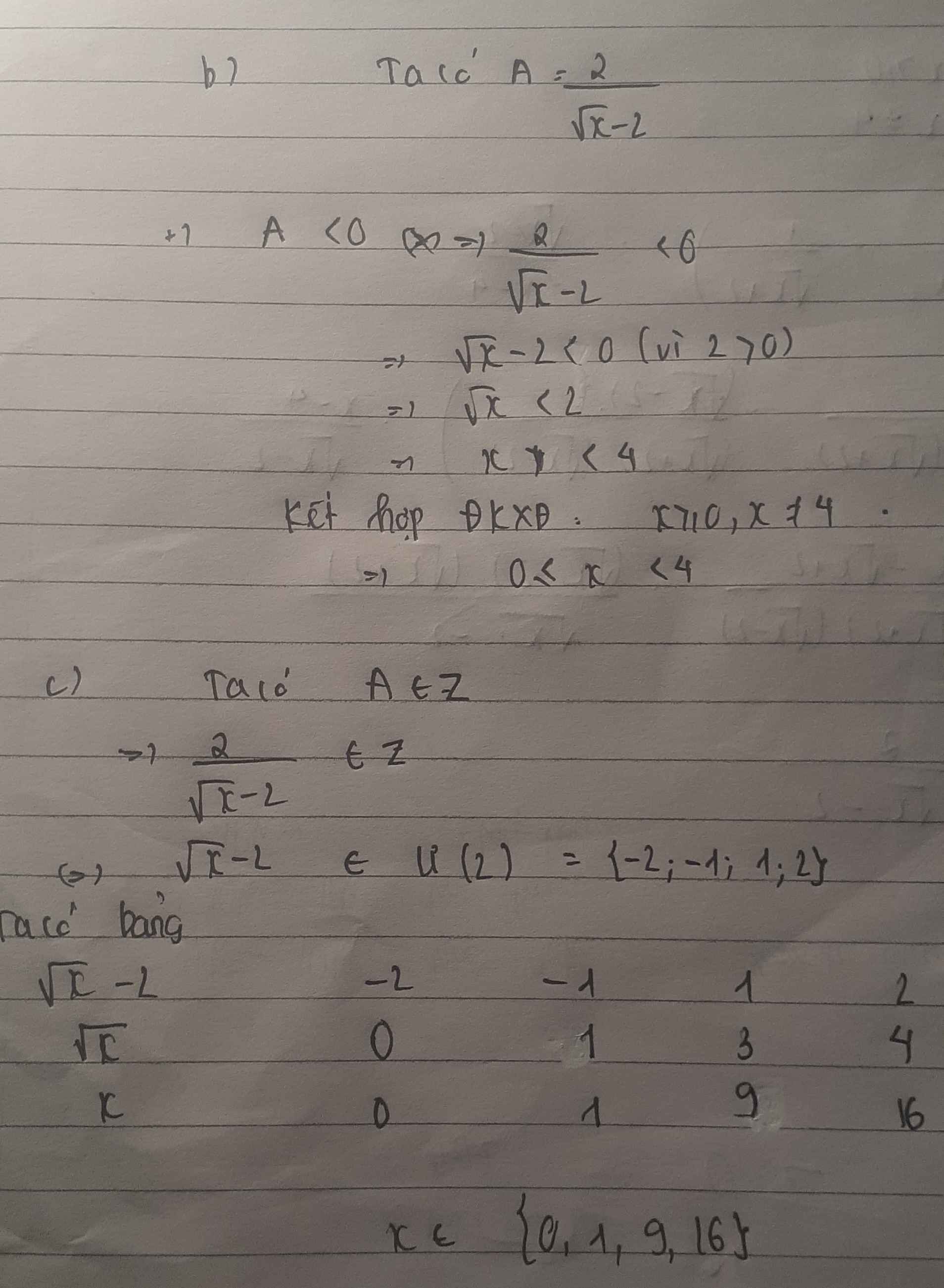Hãy nhập câu hỏi của bạn vào đây, nếu là tài khoản VIP, bạn sẽ được ưu tiên trả lời.

a) \(A=\dfrac{\sqrt{x}+2}{\sqrt{x}-2}=1+\dfrac{4}{\sqrt{x}-2}\)
Để A nguyên thì 4 ⋮ √x - 2
\(\Rightarrow\sqrt{x}-2\inƯ\left(4\right)\)
\(\Rightarrow\sqrt{x}-2\in\left\{1;-1;2;-2;4;-4\right\}\)
\(\Rightarrow\sqrt{x}\in\left\{3;1;4;0;6;-2\right\}\)
Mà x \(\sqrt{x}\ge0\)
=> x thuộc {9; 1; 16; 0; 36}
b)

Tìm được A = 24 5 và B = - 6 x - 4 với x > 0 và x ≠ 4 ta tìm được 0 < x < 1
Ta có M = - 1 + 2 x ∈ Z => x ∈ Ư(2) từ đó tìm được x=1

Thao m =3 và HPT ta có:
\(\left\{{}\begin{matrix}\left(3-1\right)x+y=3\\x+\left(3-1\right)y=2\end{matrix}\right.\)
⇔\(\left\{{}\begin{matrix}2x+y=3\\x+2y=2\end{matrix}\right.\)
⇔\(\left\{{}\begin{matrix}4x+2y=6\\x+2y=2\end{matrix}\right.\)
⇔\(\left\{{}\begin{matrix}4x+2y=6\\3x=4\end{matrix}\right.\)
⇔\(\left\{{}\begin{matrix}x=\dfrac{4}{3}\\y=\dfrac{1}{3}\end{matrix}\right.\)
Vậy với m=3 thì HPT có nghiệm (x;y) = (\(\dfrac{4}{3};\dfrac{1}{3}\))
a) Thay m=3 vào hệ phương trình, ta được:
\(\left\{{}\begin{matrix}2x+y=3\\x+2y=2\end{matrix}\right.\Leftrightarrow\left\{{}\begin{matrix}2x+y=3\\2x+4y=4\end{matrix}\right.\)
\(\Leftrightarrow\left\{{}\begin{matrix}-3y=-1\\2x+y=3\end{matrix}\right.\Leftrightarrow\left\{{}\begin{matrix}y=\dfrac{1}{3}\\2x=3-y=3-\dfrac{1}{3}=\dfrac{8}{3}\end{matrix}\right.\)
\(\Leftrightarrow\left\{{}\begin{matrix}x=\dfrac{4}{3}\\y=\dfrac{1}{3}\end{matrix}\right.\)
Vậy: Khi m=3 thì hệ phương trình có nghiệm duy nhất là \(\left\{{}\begin{matrix}x=\dfrac{4}{3}\\y=\dfrac{1}{3}\end{matrix}\right.\)

Ta có: \(P=\dfrac{4\sqrt{x}+3}{x+\sqrt{x}}+\dfrac{\sqrt{x}}{\sqrt{x}+1}\)
\(=\dfrac{4\sqrt{x}+3}{\sqrt{x}\left(\sqrt{x}+1\right)}+\dfrac{x}{\sqrt{x}\left(\sqrt{x}+1\right)}\)
\(=\dfrac{x+4\sqrt{x}+3}{\sqrt{x}\left(\sqrt{x}+1\right)}\)
\(=\dfrac{\left(\sqrt{x}+1\right)\left(\sqrt{x}+3\right)}{\sqrt{x}\left(\sqrt{x}+1\right)}\)
\(=\dfrac{\sqrt{x}+3}{\sqrt{x}}\)
Để P nguyên thì \(\sqrt{x}+3⋮\sqrt{x}\)
mà \(\sqrt{x}⋮\sqrt{x}\)
nên \(3⋮\sqrt{x}\)
\(\Leftrightarrow\sqrt{x}\inƯ\left(3\right)\)
\(\Leftrightarrow\sqrt{x}\in\left\{1;-1;3;-3\right\}\)
mà \(\sqrt{x}>0\forall x\) thỏa mãn ĐKXĐ
nên \(\sqrt{x}\in\left\{1;3\right\}\)
\(\Leftrightarrow x\in\left\{1;9\right\}\)
Kết hợp ĐKXĐ, ta được: \(x\in\left\{1;9\right\}\)
Vậy: Để P nguyên thì \(x\in\left\{1;9\right\}\)

a: \(P=\left(\dfrac{2+\sqrt{x}-1}{\left(\sqrt{x}-1\right)\left(\sqrt{x}+1\right)}\right):\dfrac{\sqrt{x}+1-\sqrt{x}}{\sqrt{x}+1}\)
\(=\dfrac{1}{\sqrt{x}-1}\cdot\dfrac{\sqrt{x}+1}{1}=\dfrac{\sqrt{x}+1}{\sqrt{x}-1}\)
b: Để P nguyên thì \(\sqrt{x}+1⋮\sqrt{x}-1\)
\(\Leftrightarrow\sqrt{x}-1\in\left\{-1;1;2\right\}\)
hay \(x\in\left\{0;4;9\right\}\)


